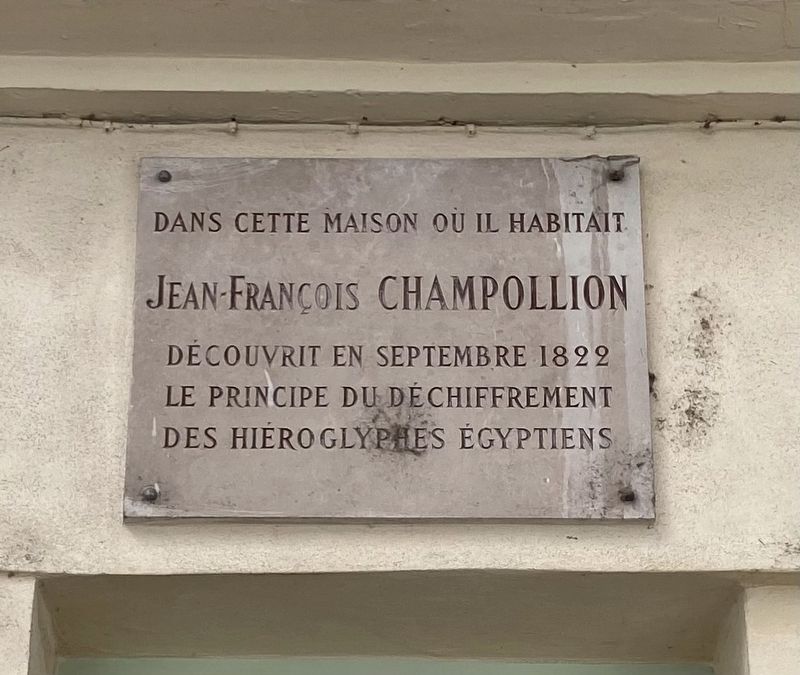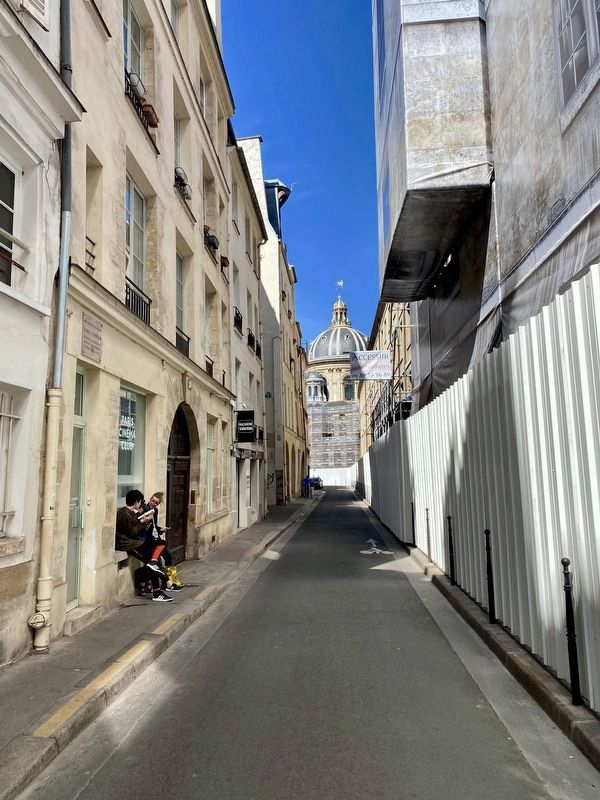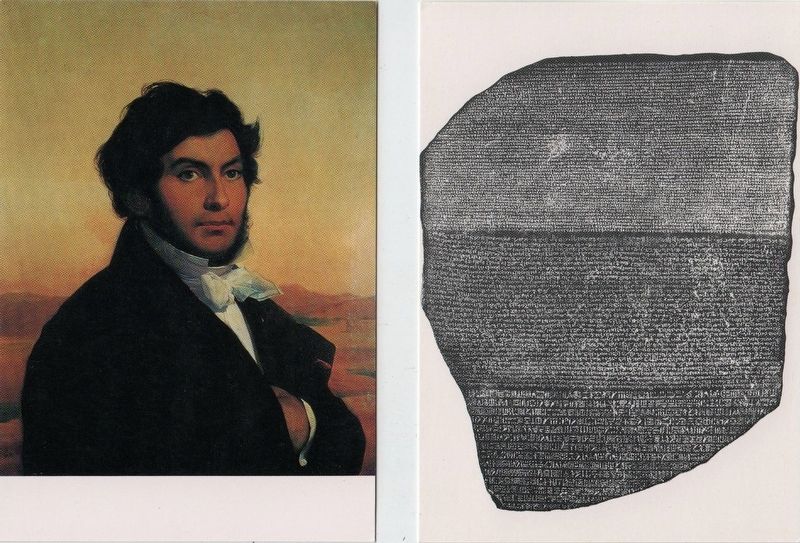Monnaie in Paris in Département de Paris, Île-de-France, France — Western Europe
Jean-François Champollion
Dans cette maison où il habitait
Jean-François Champollion
découvrit en septembre 1822
le principe du déchiffrement
des hieroglyphes égyptiens
In this house lived Jean-Francois Champollion when in September 1822 he discovered the key for the decryption of Egyptian hieroglyphs.
Topics. This historical marker is listed in these topic lists: Arts, Letters, Music • Science & Medicine. A significant historical date for this entry is September 14, 1822.
Location. 48° 51.368′ N, 2° 20.244′ E. Marker is in Paris, Île-de-France, in Département de Paris. It is in Monnaie. Marker is on Rue Mazarine, on the left when traveling north. Touch for map. Marker is at or near this postal address: 28 Rue Mazarine, Paris, Île-de-France 75006, France. Touch for directions.
Other nearby markers. At least 8 other markers are within walking distance of this marker. Ancien Hotel des Pompes (here, next to this marker); János Batsányi (here, next to this marker); Henri Lagriffoul (within shouting distance of this marker); George Sand (1804-1876) / Raymond Duncan (within shouting distance of this marker); István Keszei (within shouting distance of this marker); Marc-Antoine Gérard de Saint-Amant (within shouting distance of this marker); Le Premiere Opéra de Paris (about 90 meters away, measured in a direct line); Guy Robert Du Costal and Yvonne Le Marec (about 120 meters away). Touch for a list and map of all markers in Paris.
Also see . . .
1. Jean-François Champollion (Wikipedia).
Excerpt: "Jean-François Champollion (also known as Champollion le jeune ('the Younger'; 23 December 1790 – 4 March 1832), was a French philologist and orientalist, known primarily as the decipherer of Egyptian hieroglyphs and a founding figure in the field of Egyptology. Partially raised by his brother, the scholar Jacques Joseph Champollion-Figeac, Champollion was a child prodigy in philology, giving his first public paper on the decipherment of Demotic in his mid-teens. As a young man he was renowned in scientific circles, and spoke Coptic, Ancient Greek, Latin, Hebrew and Arabic."(Submitted on June 15, 2022.)
2. Lettre à M. Dacier (Wikipedia).
Excerpt: Lettre à M. Dacier ... is a scientific communication in the form of a letter sent in 1822 by the Egyptologist Jean-François Champollion to Bon-Joseph Dacier, secretary of the French Académie des Inscriptions et Belles-Lettres. It is the founding text upon which Ancient Egyptian hieroglyphics were first systematically deciphered by Champollion, largely on the basis of the multilingual Rosetta Stone....On September 14, 1822, while visiting his brother Jacques-Joseph, a great supporter of his ideas, Champollion made a crucial breakthrough in understanding the phonetic nature of hieroglyphics and proclaimed, "Je tiens l'affaire! " ("I've got it!") and then fainted from his excitement."(Submitted on June 15, 2022.)
3. Rosetta Stone (Wikipedia).
"The Rosetta Stone is a stele composed of granodiorite inscribed with three versions of a decree issued in Memphis, Egypt, in 196 BC during the Ptolemaic dynasty on behalf of King Ptolemy V Epiphanes. The top and middle texts are in Ancient Egyptian using hieroglyphic and Demotic scripts respectively, while the bottom is in Ancient Greek. The decree has only minor differences between the three versions, making the Rosetta Stone key to deciphering the Egyptian scripts."(Submitted on June 15, 2022.)
Credits. This page was last revised on January 30, 2023. It was originally submitted on June 15, 2022, by Andrew Ruppenstein of Lamorinda, California. This page has been viewed 193 times since then and 20 times this year. Photos: 1, 2, 3. submitted on June 15, 2022, by Andrew Ruppenstein of Lamorinda, California.


